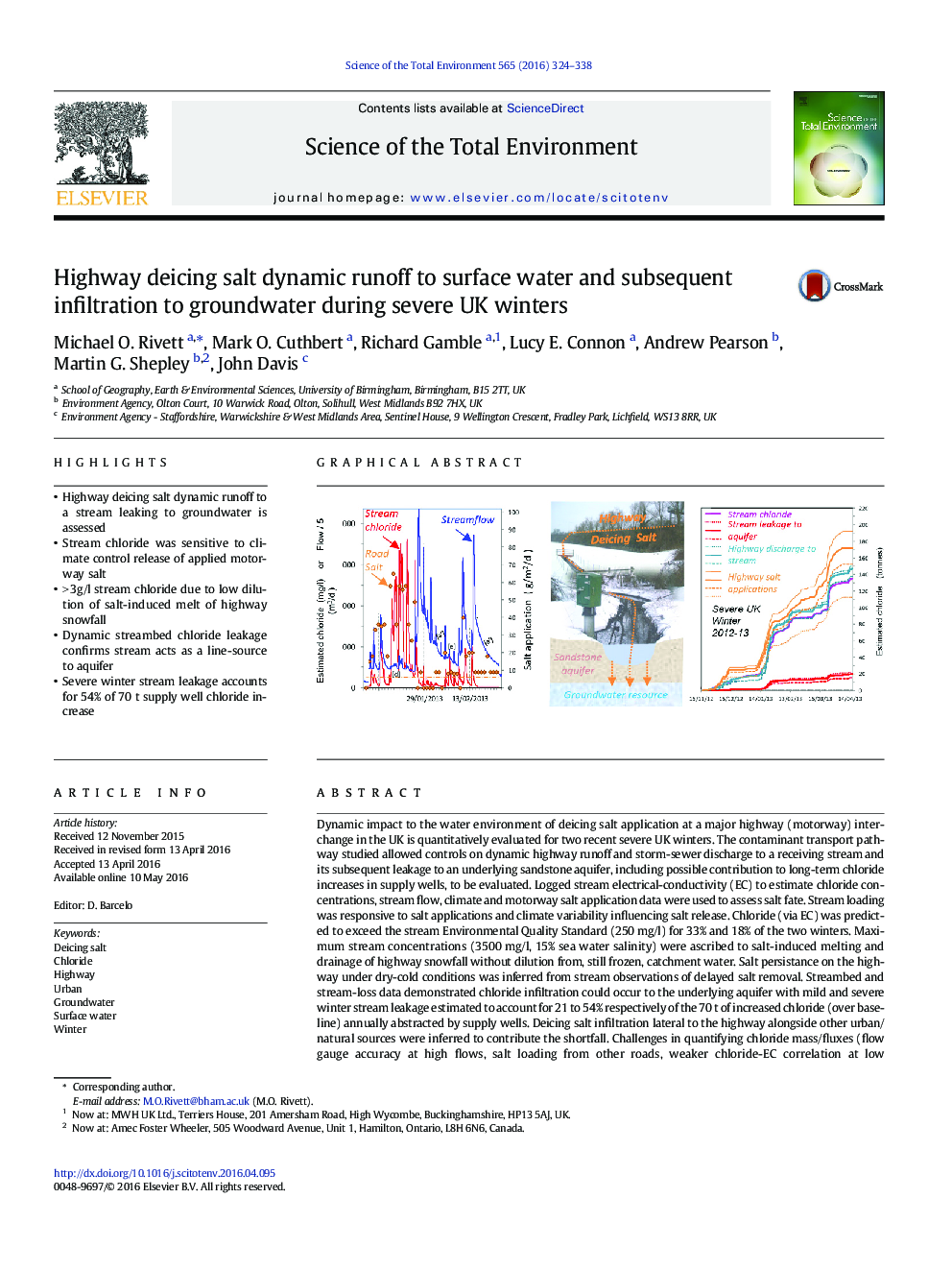| کد مقاله | کد نشریه | سال انتشار | مقاله انگلیسی | نسخه تمام متن |
|---|---|---|---|---|
| 6321969 | 1619724 | 2016 | 15 صفحه PDF | دانلود رایگان |
- Highway deicing salt dynamic runoff to a stream leaking to groundwater is assessed
- Stream chloride was sensitive to climate control release of applied motorway salt
- >Â 3g/l stream chloride due to low dilution of salt-induced melt of highway snowfall
- Dynamic streambed chloride leakage confirms stream acts as a line-source to aquifer
- Severe winter stream leakage accounts for 54% of 70 t supply well chloride increase
Dynamic impact to the water environment of deicing salt application at a major highway (motorway) interchange in the UK is quantitatively evaluated for two recent severe UK winters. The contaminant transport pathway studied allowed controls on dynamic highway runoff and storm-sewer discharge to a receiving stream and its subsequent leakage to an underlying sandstone aquifer, including possible contribution to long-term chloride increases in supply wells, to be evaluated. Logged stream electrical-conductivity (EC) to estimate chloride concentrations, stream flow, climate and motorway salt application data were used to assess salt fate. Stream loading was responsive to salt applications and climate variability influencing salt release. Chloride (via EC) was predicted to exceed the stream Environmental Quality Standard (250Â mg/l) for 33% and 18% of the two winters. Maximum stream concentrations (3500Â mg/l, 15% sea water salinity) were ascribed to salt-induced melting and drainage of highway snowfall without dilution from, still frozen, catchment water. Salt persistance on the highway under dry-cold conditions was inferred from stream observations of delayed salt removal. Streambed and stream-loss data demonstrated chloride infiltration could occur to the underlying aquifer with mild and severe winter stream leakage estimated to account for 21 to 54% respectively of the 70Â t of increased chloride (over baseline) annually abstracted by supply wells. Deicing salt infiltration lateral to the highway alongside other urban/natural sources were inferred to contribute the shortfall. Challenges in quantifying chloride mass/fluxes (flow gauge accuracy at high flows, salt loading from other roads, weaker chloride-EC correlation at low concentrations), may be largely overcome by modest investment in enhanced data acquisition or minor approach modification. The increased understanding of deicing salt dynamic loading to the water environment obtained is relevant to improved groundwater resource management, highway salt application practice, surface-water - ecosystem management, and decision making on highway drainage to ground.
475
Journal: Science of The Total Environment - Volume 565, 15 September 2016, Pages 324-338
